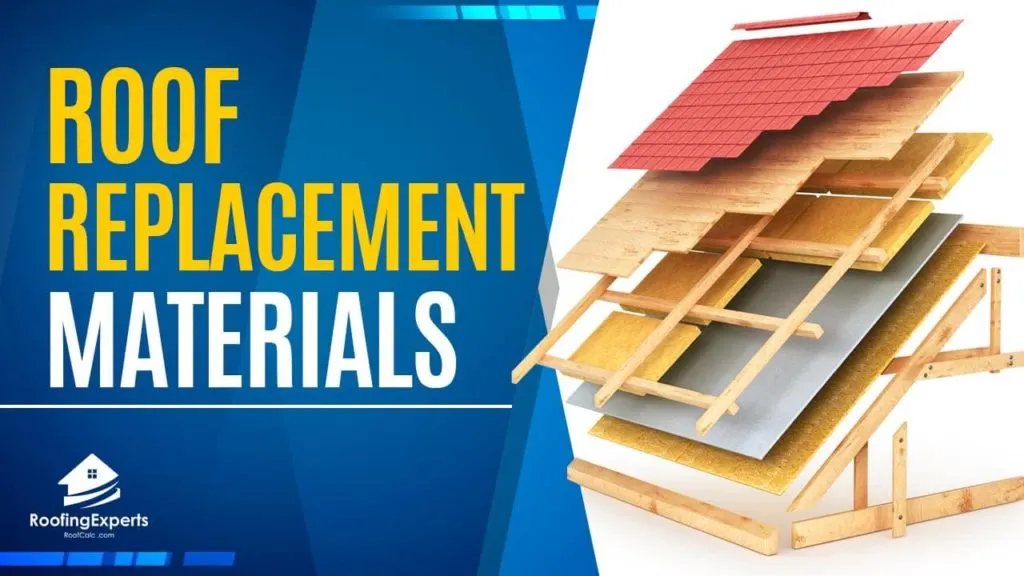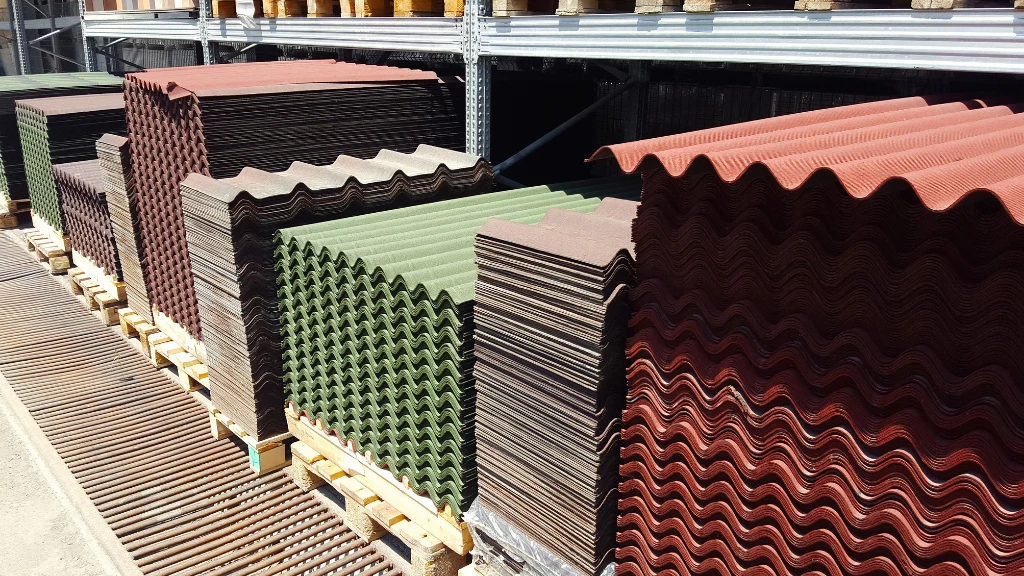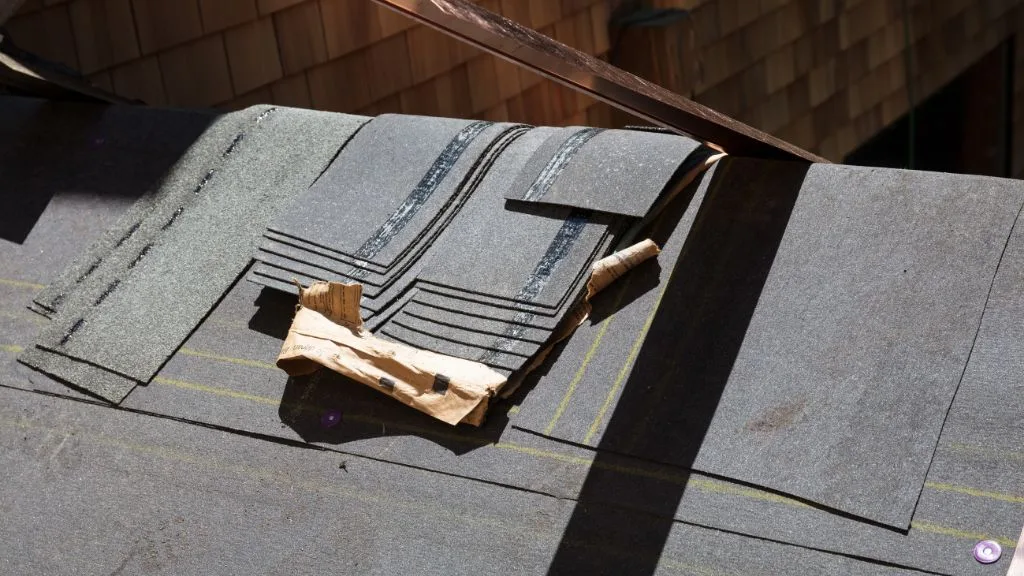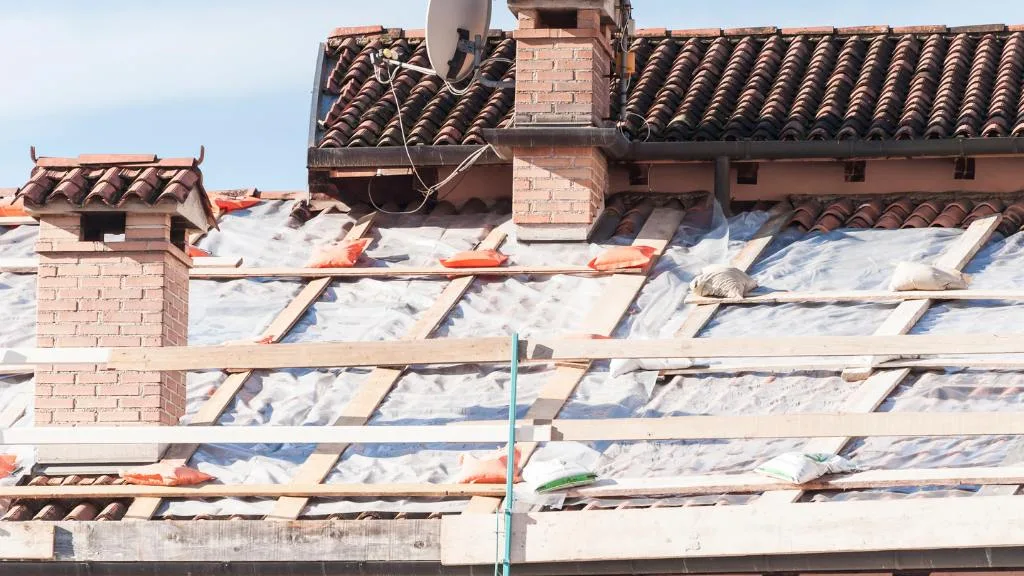
Nine Essential Materials Needed For Roof Replacement
A roof replacement is a big investment for your home. You may be wondering what materials are included with your new roof. It is important to understand what materials are included in your roof replacement.
This will allow you to make an educated decision and know that you’re getting the best value for your money. In this blog post, we’ll take a look at the different types of materials that come with most residential roof replacements, and where they can be purchased from.
Types of Roofing Materials
Roof decking – also known as roofing membrane
It is a material that is used to cover the roof of a building. It is usually made of synthetic rubber or thermoplastic and is designed to protect the roof from weathering and water damage. Roof decking can also provide insulation and improve air circulation in the building.
There are many different types of roof decking available, each with its own advantages and disadvantages. Some of the most common types include:
- EPDM: Ethylene propylene diene monomer (EPDM) is a synthetic rubber that is resistant to ozone and UV radiation. It is often used for flat roofs.
- TPO: Thermoplastic polyolefin (TPO) is a type of roof decking that is based on EPDM. It is made using an extrusion process, and can include additives that enhance its resistance to heat, cold, gasoline and oil.
- PVC: Polyvinyl chloride (PVC) has an excellent weathering resistance. It has superior elasticity compared with most other materials, so it is often used in the construction of flat roofs.
- PU: Polyurethane (PU) is another synthetic rubber product similar to EPDM – it’s usually made from recycled materials such as scrap tires. It’s widely used in flat roofs because it can have a 25-30 year lifespan when properly installed. However, it requires regular maintenance and checkups for small cracks and damages.
- SBS: Styrene butadiene styrene (SBS) is a thermoplastic that has a high resistance to heat, cold, weathering and oil – it’s also known as modified bitumen. It’s commonly used in flat roofs, where it can last up to 30 years before requiring replacement.
Roof decking may be made of other materials like stone or metal; however, they are not very common. Metal roof decking is generally reserved for steeply-sloped roofs because its weight increases the chance of roof damage due to strong winds and storms. Stone roof decking should only be installed by skilled contractors because it can easily break if not properly handled during installation and maintenance.

Asphalt shingles
Asphalt shingles are the most common material used in residential roof construction. They come in many different thicknesses, grades, colors, styles and textures.
The main benefit of asphalt shingles is that they are very affordable. They are also easy to install, and most homeowners can do the job themselves. Asphalt shingles also have a long life span, typically lasting 20 to 30 years.
There are a few disadvantages to asphalt shingles. They can be damaged by high winds, and they can also become brittle in cold weather. Asphalt shingles also tend to leak if there is any damage to the roof deck or flashing.
If you are considering installing or replacing an asphalt shingle roof, it is important to choose the right type of shingle for your climate and home. There are three main types of asphalt shingles: standard, laminated and architectural.
- Standard shingles are the most common type, and they are best suited for mild climates.
- Laminated shingles are thicker and more durable, making them a good choice for severe weather conditions.
- Architectural shingles are the most expensive, but they offer the most protection and come in a variety of colors and styles.
No matter which type of asphalt shingle you choose, it is important to have your roof installed by a professional. A poorly installed roof can lead to water damage, leaks, and other problems down the road.
Roof vents
Also commonly known as roof exhaust vents, roof fans, or simply roof vents – are a type of ventilation system that is used to expel hot air and moisture from inside a building.
There are two main types of roof vents: passive and powered.
- Passive roof vents rely on the natural convection of hot air to rise and escape through the vent. This type of vent is typically less expensive than a powered roof vent, but it can be less effective at removing heat and moisture from the building.
- Powered roof vents use a fan to move air out of the building. This type of vent is more effective at removing heat and moisture from the building, but it is also more expensive.
Roof vents are an important part of any ventilation system, as they help to remove excess heat and moisture from the building.
This can help to improve comfort levels indoors, as well as prevent the formation of mold and mildew. Roof vents can also help to reduce energy costs by removing heated air from the building, which is especially important in the winter.
Roof flashing
The final step in any roof repair, flashing is a piece of metal (similar to the kite-like thing on top of your house) that keeps water from getting into places it shouldn’t be.
Generally speaking, there are two types: Flashing and counterflashing. The correct one should be used for each spot you’re doing work at – because otherwise, you might wind up with a leak!
Flashing comes in different shapes and sizes, depending on what area needs to be covered. For instance, roofers put flashing around vent pipes so they don’t get rusted out/rotted by leaks, as well as along skylights, chimneys, and such because those areas tend to accumulate debris which can prevent them from draining rainwater properly.
Counterflashing, as the name suggests, goes over top of flashing and helps to keep it in place while also hiding any ugly metalwork. It’s usually made from a different material than the flashing itself (like wood or vinyl), and is often decorative to help match the home’s exterior.
Both are available at most hardware stores. So if you’re doing any repairs or renovations on your roof – make sure you pick up some flashing and counterflashing while you’re there!

Drip edge or Rain gutter
It is a metal or plastic strip that is installed on the roof edge to prevent water from running off the roof and down the sides of the building. It is also known as a roof edge protector, eavestrough, or eavestrough.
Most drip edges have an L-shaped profile and are made of aluminum, galvanized steel, copper, or vinyl. They are attached to the roof with screws or nails and extend out over the edge of the roofing material. The lip of the drip edge traps water and directs it towards the gutter or downspout.
Drip edge is usually included in new roof installations, but can also be added to existing roofs. It is important to install drip edges properly so that it directs water away from the building and does not create leaks. Improper installation can cause water to run off the roof and pool around the foundation, leading to damage to the building and its surroundings.
Underlayment
A highly resilient sponge-like material, open-celled (air-filled), used as an underlayment for resilient wood flooring. Underlayment is usually sold in rolls and does not need to be installed over a vapor barrier
The purpose of underlayment is to provide an extra layer of support for wood floors installation on top of the subfloor.
This will compensate for humidity variations between seasons and rooms, prevent squeaks from forming underneath your new solid wood flooring, protect your home from dust and other particles that may wear out your flooring surface over time, and create a thermal insulation layer to keep your wood flooring installation cooler in the summer and warmer in the winter.
The main types of underlayment are cork, foam rubber, vinyl, and felt.
- Cork is a great choice for underlayment because it is durable, has a natural resistance to mold and mildew growth, and is sound-absorbent.
- Foam rubber is also a good option because it is dense enough to prevent squeaks, yet soft enough to provide some cushioning.
- Vinyl is moisture-resistant and relatively inexpensive, making it a popular choice for underlayment.
- Felt is an economical option that can be used under all types of flooring materials.
When installing an underlayment, make sure it completely covers your subfloor, or else it will not protect the flooring properly.
Pipe boots – also known as roof boots
An important part of a roofing system. They are typically made from rubber or other weather-resistant materials, and they help to protect the pipes that run along the roof from weather damage and leaks.
When it comes time to replace your roof, it is important to make sure that the pipe boots are also replaced. If you neglect to replace them, you could end up with water damage and leaks in your home.
If you are unsure whether or not your pipe boots need to be replaced, it is best to consult with a professional roofing contractor. They will be able to inspect your roof and tell you what needs to be done in order to keep your home safe and dry.
Replacing your pipe boots is very simple. If you are experiencing roof leaks, there is a good chance that your old pipe boots have already failed, so you will simply need to remove them and install the new ones.
When choosing the correct replacement for your home, it is important to look for quality materials. You should choose materials that can stand up against weather over time without breaking down or cracking. The best materials are rubber and high-impact plastic, but metal can also be used in some cases.
Once you replace all of the old boots with brand new ones, make sure not to block off the vent pipes in order to allow airflow in and out of your roof vents. This airflow helps prevent moisture buildup in between uses.
Ice and water shield – the products that keep ice dams from forming
Are a standard part of roof replacement. If you’ve ever read an article about roofing, chances are it mentioned ice and water shield at least once. Installing ice and water shields is a critical step in the installation process, but one that is often breezed over in favor of more exciting topics like shingles.
When left unattended, ice dams can cause significant damage to the rest of your house by causing leaks into wall ceilings and insulation. In addition, when meltwater backs up behind an icicle-laden eave and seeps through cracks or gaps beneath siding or roofing materials, it can cause significant mold growth.
The best way to prevent these problems is by installing ice and water shield during your roof replacement project. Ice and water shield is a rubberized membrane that is installed under the shingles and helps to prevent water from seeping into your home. It’s an important step in any roof replacement project and one that you shouldn’t skip.
Ridge capping
It is the term used for a roofing technique where the ridge of a roof is covered with a cap of material, usually metal or slate. This serves to protect the ridge from weathering and extends the life of the roof. It also adds a decorative touch to the roofline.
There are several different types of ridge caps, each with its own benefits and drawbacks.
- The most common type is the batten cap, which is made from strips of wood that are fitted over the ridge and fastened in place with nails or screws. Batten caps are easy to install and relatively inexpensive, but they are not very durable and can be damaged by wind and rain.
- Another type of ridge cap is the standing seam metal cap. This is made from a sheet of metal that is bent into a U-shape and attached to the ridge with clips or screws. Standing seam caps are very durable and weather-resistant, but they can be expensive and difficult to install.
- Finally, there is the slate cap, which is made from thin slabs of slate that are fitted over the ridge and secured with nails or screws. Slate caps are very durable and weather-resistant, but they can be expensive and difficult to install.

Conclusion:
DIY roof replacement is no easy task and is certainly not for everybody. We here at RoofCalc.com highly recommend that you hire the help of a roofing contractor to do it for you.
Moreover, roof replacement needs specific skill sets and a select list of materials and tools, therefore even if you make a slight mistake it could lead to a huge problem (regarding your roof and in your pocket as well!).
When a roofing contractor comes up with a list of materials that will be needed for roof replacement, knowing what’s needed and what’s not can help you make an informed decision! We hope this guide will come in handy so you know what materials are needed when you are going for a roof replacement for your home. Good luck!

